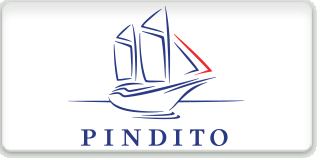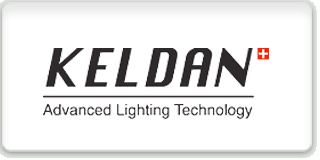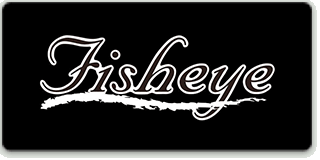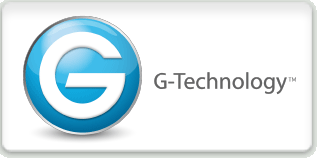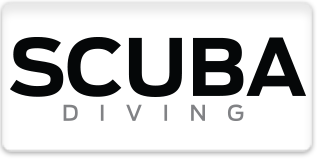GEAR TESTS: Panasonic Lumix GH3
 |
Sterling Zumbrunn Chief Technical Officer  |

Pro Video in a Compact Camera
I first had a chance to dive the Pansonic GH2 back at the 2011 Digital Shootout, and it was one of my favorite mirrorless cameras at that time. So I was really eager to check out the GH3 in Nauticam's NA-GH3 housing. The GH2 was an extremely popular camera with professional videographers, and Panasonic listened closely to its customers who used it for video, and implemented some of the features they asked for. At the top of that list, the GH3 adds the ALL-I codec found in the 5D Mark III at an impressive bitrate of 72Mbit per second. The GH3 also adds Quicktime H264 MOV format in addition to AVCHD. This is a fantastic revision, as I greatly prefer working with individual self-contained MOV files rather than AVCHD's arcane file structure. In addition, the GH3 captures video at a full 1080/60p frame rate, something that only the highest end Canon DSLR, the 1D C can achieve. Along with very capable stills capture, the GH3's video features have made it our favorite mirroless camera to date.
The Nauticam NA-GH3 Housing
The NA-GH3 housing is larger than all Micro 4/3 and NEX series housings the company has put out to date. This is due to the large size of the camera body itself, including the pop-up flash that is used to trigger strobes fiber optically. The NA-GH3 is still smaller than any SLR housing, and in water it feels quite compact to swim with. In order to achieve stability in my video, I used a tripod attached to the Flexitray W.
One of the features I love with Nauticam's mirrorless housings is the included pre-drilled hole for accessory bulkheads. The NA-GH3 is no exception, thus making it simple to add an electronic bulkhead for hard-wired strobes or an HDMI bulkhead for Backscatter's Wahoo or Nauticam's NA-DP4 monitor housings. You could even add an Airlock vacuum system to protect your investment. For my time with the GH3, I focused primarily on video and used a monitor during nearly all of my dives. Having the larger screen for framing my shots and verifying focus was a godsend.
Focusing With the GH3
The GH3 features outstanding autofocus performance. As long as I had sufficient light, I was able to lock focus extremely quickly, even when really close to subjects using the Olympus 60mm Macro Lens and the SubSee +10. The GH3 features a AF lock button which was extremely handy for locking down focus once dialed in. Manual focus on Micro 4/3 lenses is done "fly by wire," meaning that even though there is a physical focus ring, the focus is controlled electronically. This gives a less tactile feel than a mechanical focus mechanism found on SLR lenses. I missed the mechanical control considerably, as I found it annoying to have long turns using Nauticam's focus gear. But the autofocus with the Olympus 60 was so good, I quickly got used to just relying on that.
Low Light Performance and Micro 4/3 Benefits
Low light performance on the GH3 is excellent, certainly for a Micro 4/3 camera. It will not come close to outperforming a full frame camera like the Canon 5D Mark III, but that would be expecting too much from a sensor that's a fraction of the size. However, for the majority of low light situations, including shooting with Nightsea Solas, the GH3 performed admirably. Where that small sensor becomes an advantage though is with depth of field for macro. Micro 4/3 is much more forgiving on critical focus than full frame, especially when shooting at close working distances.
Custom White Balance Improvements
Executing custom white balance is an area that I was very pleasantly surprised with. I did not have much luck with the GH2 in getting good looking white balance at depth, but the GH3 was a different animal entirely. The workflow for setting white balance was quite simple on the camera, and the results actually looked quite good, even down to depths of 60-80 feet. I still chose to shoot with Keldan Luna 8 Flux video lights for most of my shots to bring out the maximum color in my subjects.
The GH3 as a Stills Camera
As a stills camera, the GH3 performs quite well. One thing I really liked is that since 60p video capture requires a shutter speed of 1/125, it is much easier to jump between stills and video, as that is fast enough the majority of situations. It also helps that the GH3's manual movie and photos modes are right next to each other, making it quick to jump back and forth. I used Keldan Luna 8 Flux video lights for most of the stills in this gallery, and they were bright enough to capture good color and detail. I managed to shoot with Sea & Sea's YS-D1 strobes for one dive, and I found TTL strobe triggering to be fast and accurate. The GH3 features a beefy battery (about the size of one found in the Canon 5D Mark III), so the internal flash recycle was quick, and I never came close to exhausting the battery during any of my dives.
Conclusion
All in all, I really fell in love with this camera over the course of the Shootout, to the point where I had to have it pried out of my hands so others could give it a run. Not only is the GH3 the king of the hill for mirrorless cameras, it gives a higher end DSLRs a run for their money, especially in the area of macro video. All of this is available at a very attractive price point compared to full SLR systems. The GH3 is truly one of the most interesting cameras of 2013, and the Nauticam NA-GH3 housing is an outstanding option for taking it underwater.
 |
Jim Decker CEO  |
The GH3 is the latest micro 4/3 camera from Panasonic. Micro 4/3 is a joint venture between Panasonic and Olympus. Both brands share the same camera mount, meaning lenses from one brand will work on the other. The result is a great selection of lenses between the 2 brands for both wide angle and macro. Nauticam's NA-GH3 is an outstanding housing to take this camera underwater.
Lens Selection for the Panasonic GH3
My favorite wide lens is the Panasonic 8mm fisheye, and my favorite for macro is the Olympus 60mm macro, which will do 1:1 reproduction. Because the sensor of the 4/3 cameras is 1/2 the size of a full frame SLR, focal lengths are about 1/2 the length for the same angle of coverage. Shorter focal length lenses have more depth of field than longer ones. This added depth of field makes shooting macro video much easier than on a full frame SLR, but still has shallow enough depth of field to separate subjects from their background when compared to smaller sensor video cameras.
Panasonic GH3 Stills
Shooting still images with the NA-GH3 housing is closer to shooting with an SLR than a compact camera. Focus can be removed from the shutter and placed on a rear control. Focus is fast, but not quite as fast as on the Olympus E-M5.
Panasonic GH3 Video
The video features of this camera are nothing short of amazing. Panasonic is a company that also produces professional broadcast video cameras, and they've incorporated pro level features that even high end SLRs don't have. The movie codec is now a single file .MOV file instead of the dreaded AVCHD format, and records at a high data rate of 72Mbit/second. Most impressive is the 1080/60p recording. At 60p, motion has a very smooth, life-like quality to it that 30p can't match.
The video quality from this camera is such that you can't help hitting the record button in between searching for your next still image setup.
Custom White Balance
Another feature massively updated is custom white balance. Previous Panasonic cameras were absolutely dismal with a custom white balance, rendering a shade of Exorcist puke green whenever executed underwater. Now the colors are on par with class leading Canon SLRs. The foreground color and the blues look great. After about 60 feet, the blues can take on a little too much red, but at that depth, it's hard for any camera to white balance to ambient light, and video lights are usually used instead.
Panasonic GH3 Disadvantages
A disadvantage to this camera is its size. The housing is rather large for a micro 4/3 camera, and it's larger than housings for the Sony NEX-6 or Olympus E-M5, but it's still smaller than any SLR housing. There are so many customizable buttons on the camera I found myself accidentally hitting the metering button rather than AF-ON.
Conclusion
I didn't get a lot of time on this camera. I'm looking forward to shooting it more so I can explore additional features and optimize further the customization of controls for underwater shooting. It's now my favorite mirrorless camera.
READ MORE GEAR TESTS:







